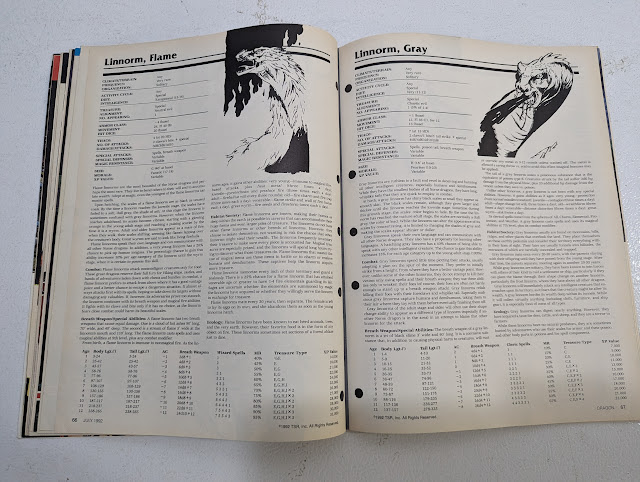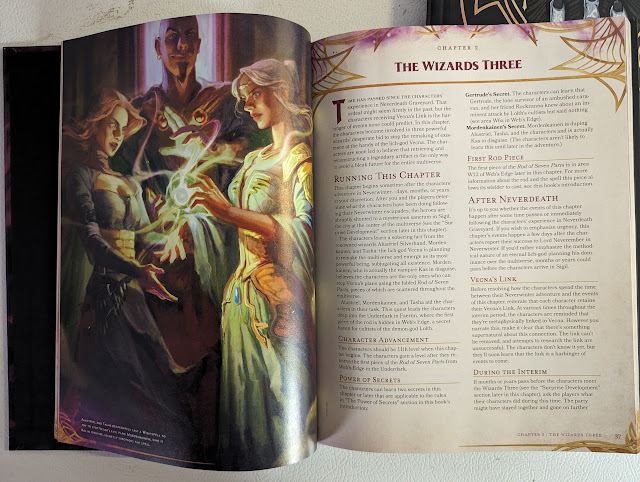
The world has endured much in the last eight decades in what has been an interesting twenty-first century. December 24th, 2011, marked the end of the five-thousand-year Mayan calendar and the beginning of the next, and with it came unimaginable change. U.G.E., or ‘Unexplained Genetic Expression’, gave rise to the birth of mutant and changeling children, followed by ‘Goblinisation’, in which a tenth of the population mutated into hideous forms. Although their appearance triggered global race riots, they became recognised as Dwarves, Elves, Orcs, and Trolls, separate species in their own right, members of Metahumanity known as the Awakened. Dragons appeared in the skies and were greater than anyone even imagined, owning corporations, becoming media stars, and one even getting elected president—before being assassinated on the day of his inauguration. Corporations were recognised as sovereign states unto themselves, so rose the power of the mega corps, all chasing status on the ten-member Corporate Council, regulating their activities where once national governments had done so. Recognition of the corporations and their extraterritoriality weakened the United States as the Native American demand for recognition turned into an armed struggle that would eventually force Canada, Mexico, and the United States to recognise the Native American Nations under the terms of the Treaty of Denver. Worse was to follow with the data Crash of ‘29 as a killer virus destroyed data and systems worldwide, toppling governments and threatening to destroy the USA. In response, operatives co-opted by the US government and using advanced cybertechnology entered cyberspace and fought the virus. Not all survived, but several of those who did took that technology to market, ultimately leading to personal cyberdecks which allowed individuals to easily access cyberspace and travel anywhere from the comfort of their own homes. In the wake of the Crash of ’29, what remained of the United States merged with Canada to form the United Canadian and American States in order to save both their economies and resources. It was followed by the secession of the Confederated American States four years later, and the founding of Tir Tairngire, an Elf nation just outside of Seattle. The rise of two types of technology—cybernetics and virtual reality would lead to widespread adoption of cyberware as augmentations and the Matrix, the descendant of the World Wide Web, its virtual reality or augmented reality accessed via cybernetic implants, a commlink, even the natural ability of the Technomancer, has run parallel with the rise and study of magic through various traditions.
By the year 2080, the divide between rich and poor, between SIN and SINless has only got wider. A SIN or ‘System Identification Number’ provides state and corporate recognition, access to education, healthcare, and potentially a job, but that job is going to be as a wage slave serving the interests of a corporation. Some of the SINless see their not being part of the system as a badge of honour. It enables them to undertake jobs and tasks that having a SIN would make very difficult, whether that is protecting the rights of fellow slum dwellers or becoming Shadowrunners. Shadowrunners do the jobs, perform the heists and personnel extractions, steal data, babysit assets, investigate mysteries, and the like that corporations and other agencies with a budget big enough do not want to be seen doing. Employed by a ‘Mister Johnson’, they are a corporate fixer’s deniable assets, willingly paid to do underhand tasks that would otherwise ruin a corporation’s reputation, until that is, the Shadowrunners become a liability!
This is the setting for
Shadowrun – Sixth World, the roleplaying game originally published in
1989 by FASA, Inc. and subsequently developed over the course of thirty years into novels and short story anthologies, miniatures games, card games—collectible and otherwise, computer games, and more, including, of course, a detailed background and history of the Sixth World setting itself, which also spanned the roleplaying game’s thirty year history, from 2050 to 2080. It combines three genres in particular, two of them particularly not being obvious bedfellows—Cyberpunk, Fantasy, and Urban Fantasy. It is a roleplaying game in which the Player Characters take the roles of Shadowrunners, freelance operatives trying to get by without attracting too much attention, but getting involved anyway.
Shadowrun – Sixth World is the latest iteration of the rulebook, published by
Catalyst Game Labs essentially the sixth edition for the setting’s Sixth World. It introduces the setting, provides the means to create the numerous types of Player Characters possible, run the different aspects of the setting—primarily magic and the Matrix, details a wide array of threats and other NPCs and creatures, lists numerous items that the Player Characters can equip themselves with, and hidden at the back, almost like an afterthought, provides a handy introduction to the Seattle of 2080 that includes several NPC contacts and almost twenty scenario hooks! This is all peppered with fiction set within the world of
Shadowrun that helps to impart its flavour and feel, examples of the rules in action, and a pair of pullout sections that showcase just a little of the artwork of the roleplaying’s past thirty years. Veteran players will recognise many of these pieces.
One of the first things
Shadowrun – Sixth World does is highlight the differences between it and previous editions. This is aimed at the veteran player coming to the new edition. So, what then are those changes? First, and foremost, it includes faster easier rules for Edge, the undefinable element of risk taking, guts, and heedless ignorance in the face of danger, stripped down skills, Armour not being part of the Damage Resistance test, the Elimination of Limits, a hangover from the previous, more complicated rules, simplified action, spells no longer needing Force, and altered Matrix functions. The aim is to provide simpler, more streamlined mechanics that encourage greater, faster, and more dynamic action, whilst ultimately making play easier.
A Player Character in
Shadowrun has a mix of physical, mental, special attributes, typically one to six. The four physical attributes are Body, Agility, Reaction, and Strength, and the four mental attributes are Willpower, Logic, Intuition, and Charisma. The four Special attributes are Edge, Magic, Resonance, and Essence. Of these, only magic-using Player Characters have Magic and only Technomancers have Resonance, whilst all Player Characters have Edge and Essence. The latter measures how much cyberware, bioware, and other augmentations that a Player Character can have before he becomes too machine-like. It also measures the capacity for a Player Character to use magic. Install too many augmentations and the Player Character’s Essence is reduced, and so is his capacity to use magic. Skills, on the same scale as attributes are divided between active skills and knowledge skills, plus languages. A Player Character has a Metatype—Dwarf, Elf, Human, Ork, or Troll—which conform to the classic fantasy versions of them, plus a Lifestyle, ranging from Street and Squatter to High and Luxury, which apart from Street has to be paid for and maintained. He can also have Qualities, positive or negative, such as Analytical Mind, Catlike, AR Vertigo, or Combat Paralysis.
A Player Character will also have a broad role, either Arcane Specialist, Face, Street Samurai, or Technology Specialist, but within them there are several ways of achieving what each role is designed to do. The Arcane Specialist can be a Mage, a Shaman, or an Adept, the latter being able to focus his magic inwards to enhance himself either physically or socially; a Face can be skill based, a social Adept, or augmented with the right cyberware or bioware; and a Street Samurai can be all skill focused, a physical Adept, or heavily augmented with cyberware. The Technology Specialist can either hack into the Matrix or operate vehicles and drones, either through technological means or innate magical means. The Decker uses technology to hack the Matrix, whilst the Rigger uses it to control technology. The Technomancer uses innate magical ability to hack the Matrix, whilst the Dronomancer uses it to control technology. In general, Player Characters will be specialists in their role. There is some flexibility in terms of character design and the degree to which a character is augmented, but that degree will always be limited by how much a player wants his Arcane Specialist character to be able to use magic.
Character creation itself is not an easy process and takes some getting used to. It uses an updated version of the Priority System first seen in
Shadowrun, First Edition in 1989. A player sets the priorities for his character’s Metatype, points to assign to skills and attributes, Magic or Resonance capability, and Resources. Metatype also includes Adjustment Points, which are then spent on Edge, attributes for that Metatype, and either Magic or Resonance. Resources are not just spent on weapons, armour, and other equipment, but also cyberware. At the end of the process, a Player Character receives some Knowledge and Language skills for free (but can purchase more), chooses Contacts and some Qualities, and spends Karma to customise the character. This is in addition to a series of questions designed to help the player envision his character and his motivation as well as his place in the Sixth World. Alternatively, a set of ten pre-generated archetypes provide ready-to-play Player Characters or examples to show what the end result looks like.
Kimama Sanchez
Metatype: Ork Role: Shaman
Racial Qualities: Low-light Vision, Built Tough 1
Body 6 Agility 4 Reaction 3 Strength 6
Willpower 4 Logic 2 Intuition 2 Charisma 5
Edge 4 Magic 6 Essence 6
Attack Rating: 9 Defence Rating: 6+3 Initiative: 5+1d6
Composure: 9 Judge Intentions: 6 Memory: 4 Lift/Carry: 10
Skills: Astral 1, Athletics 1, Close Combat 1, Conjuring 5, Influence 1, Perception 1, Sorcery 5 (Spellcasting +2)
Knowledge Skills: Spirit Types, Seattle Dive Bars
Languages: Or’zet
Spells: Analyse Truth, Antidote, Armour, Confusion, Detect Life, Detect Magic, Heal, Mindlink, Stabilise, Stunbolt
Rituals: Circle of Healing, Ward
Qualities: Mentor Spirit (Bear), Combat Paralysis, Quick Healer, Built Tough (2)
Contacts: Bartender (Connection 2/Loyalty 3), Beat Cop (Connection 2/Loyalty 3), Fixer (Connection 3/Loyalty 2), Mechanic (Connection 3/Loyalty 3), Mafia Consigliere (Connection 3/Loyalty 1), Mentor (Connection 3/Loyalty 3)
Equipment: Extendable Baton, Combat Knife, Lined Coat, Metalink Commlink, Credstick, Lifestyle – Squatter (Prepaid, One Month), Evo Falcon, ¥3557
Mechanically, at its most basic,
Shadowrun – Sixth World is quite simple. To have his character undertake an action, a player rolls a dice pool of six-sided dice, results of five and six counting as successes or hits. If more than half of the results consist of ones, then there is potential for a glitch or critical glitch. The dice pool typically consists of the total of an attribute and a skill, a task having a threshold, which represents the number of hits a player has to roll to succeed. This is a straightforward Simple test, whilst an Extended test consists of two Simple tests, the side rolling the most hits winning the outcome. Extended tests are essentially a series of Simple tests, the Player Character having a period of time in which to roll them in order to achieve a greater threshold. Alternatively, a player can buy hits, dividing the number of dice in his dice pool by four and counting the result as the number of hits.
Edge gives an advantage to a Player Character’s action. The cost ranges from one to five Edge. So, for example, a one-Edge Boost will enable a player to reroll a die or add three to Initiative; a two-Edge Boost lets him add one to a die, give an ally an Edge, or Negate an Edge used by an enemy; a three-Edge Boost grants an automatic hit or heals a some Stun damage; a four-Edge Boost can add Edge to the dice pool and make results of six explode or reroll all failed dice; and a five-Edge Boost can make results if two count as glitches for the enemy or create a special effect, that benefits the action. These are not the only Edge Boosts, but in addition, there are Edge Actions. These include making a Big Speech, a Called Shot, a Knockout Blow, or gaining Sudden Insight, all of which have their benefits. Lastly, Edge can be permanently burned to gain a ‘Smackdown’ when a Player Character really, really has to hit hard, and ‘Not Dead Yet’ when otherwise, it looks like the Player Character should be.
Edge is integral to play. A Player Character can earn Edge through, especially in combat encounters, up to a temporary maximum of seven, so a player should not only be looking for opportunities to earn it, but opportunities to spend it too. Thus, ideally, there should be a constant turnover of Edge as play progresses. Yet, this is hampered by the sheer number of Edge Boosts and Edge Actions and they are a lot to remember. In fact, too many to remember with having a reference sheet to hand for every player, let alone the Game Master.
One Saturday night, Kimama Sanchez gets home from the bar where she has been drinking to find four gangers, members of the 7th Avenue Slashers, attempting to lift her Evo Falcon. They have a Professional Rating of two, so their attributes are all two with skills to match, except for their intimidating manner and willingness to throw their weight around. Kimama Sanchez just wants to go to bed, so to avoid a fight, she attempts to intimidate the gangers. As a tough-looking Ork, Kimama is definitely more physically powerful than any of the gangers. This gains her an extra point of Edge from the Game Master. Kimama’s player keeps that in reserve and rolls her dice pool, which consists of six dice, equal to her Charisma + Influence. This will be opposed by the gangers’ Willpower + Intuition, equal to two each. The Game Master rolls this as a group, stating that for each hit that Kimama’s player scores more than the gangers, one of them will flee. The Game Master rolls three, three, six, and six. Kimama’s player rolls two, three, four, six, six, and six, a good roll, but only enough to affect one ganger. Fortunately, Kimama has the extra Edge awarded because she is tough-looking and her player decides to use it as well as a point of her innate Edge to purchase a two-Edge Boost to add one to one of the die results. She turns the result of four into five and now has two hits. This means that she has successfully intimidated two of the gangers, who after Kimama asks gruffly, “Hey, squishies, you really wanna be trying this, this time of the morning?”, decide that taking on a tough-looking Ork this time of the morning is not for them.The core mechanics are used throughout
Shadowrun – Sixth World, including all of the mechanical subsets that handle the different aspects of the rules—magic, Technomancy, the matrix, rigging, and so on. Combat is surprisingly treated in just twenty pages, but that also includes plenty of examples that really help the Game Master grasp the rules. At the core, combat revolves around comparing Attack Rating to Defence Rating, and if one is greater than the other by four or more, that combatant gains a point of Edge. More Edge can be gained from the situation, from gear, and more. Edge can be spent before or after the roll. Damage can be soaked by rolling hits generated from a roll based on the Body attribute. Damage is applied to the defendant’s Condition Monitor. Overall, the combat covers ranged and melee combat, grappling, knockdown, explosives, gas attacks, spray attacks, and more.
Magic is divided into two traditions, Hermeticism and Shamanism, the former being academic in nature, the latter more experienced and performative in nature. The first relies on Logic as its attribute, the second on Charisma as its attribute. The rules cover spells, conjuring, summoning, enchantments, alchemy, and more. Adepts have innate powers, such as Astral Perception, Danger Sense, Killing Hands, and more. One danger of using magic for any tradition is the possibility of Drain because using or casting magic is tiring. Every spell has a Drain Value, and when it is cast, the magic-using character’s player must make a roll to withstand its effect. For every hit, the Drain Value is reduced. Any Drain Value left over inflicts stun damage, but this is stun damage that cannot simply be healed. It must be rested to recover from!
It is Sunday morning following a Seattle night out and Kimama is still facing down two gangers who want to steal her bike and were not put off by her intimidating manner. One of them draws a streetline special and points the pistol at her and with a sneer says, “Whatcha gonna do ’bout it, trog?” The other one pulls out a knife. Things have taken a bad turn, one which Kimama wanted to avoid. Combat is about to ensue, which begins with initiative. The Game Master will roll one die and add four for the gangers, whilst Kimama’s player will roll one die and add five. However, Kimama has the negative Quality of ‘Combat Paralysis’, which not only halves the result, but means that she goes last in the first round. The Game Master rolls one, adds four, for a total of five. Kimama’s play rolls a five and adds five for a total of ten. Halved, this is five. What this means is that after the first round when Kimama has to go last due to her Combat Paralysis, she has the same Initiative as the remaining gangers. However, since her Edge is four compared to their one from their Professional Rating of one, this breaks the tie and she will go first in subsequent rounds.
The lead ganger, armed with his Streetline Special, opens fire at Kimama. The Game Master rolls the ganger’s Firearms 2 + Agility 2, Kimama’s player will be rolling Reaction 3 + Intuition 2, whilst the Attack Rating of the Streetline Special is compared against Kimama’s Defence Rating. The Streetline Special has an Attack Rating of eight, whilst Kimama has a Defence Rating of nine, which includes the benefit of her lined coat. Since the Attacking Rating is not four greater than the Defence Rating, there is no Edge benefit. From the situation, the Game Master states that it is dimly lit in the alley alongside Kimama’s squat, but since she has low-light vision as an Ork, gives her a bonus Edge. The Game Master is rolling four dice, getting a result of four, six, six, and six, whilst Kimama’s player rolls two, three, three, five, and six. The Game Master rolled one more hit than Kimama’s player. This is added to the damage value of the Streetline Special, which is two, for a total of three damage. Kimama’s player now rolls to soak this damage, which is six for her Body. Her player rolls two, three, four, four, five, and five for two hits, leaving Kimama with a point of damage to suffer. Given how tough she is, this really is a scratch! This is marked off on the Physical damage Track of her Condition Monitor on the character sheet. Fortunately for Kimama, the other ganger thinks that the pistol is enough to change her mind and does not attack this round.
It is time for Kimama to act. She is not keen on violence, so decides to cast Stunbolt at the ganger with the gun. Kimama’s player will roll her Magic 6 + Sorcery 5 (Spellcasting +2) for a total of thirteen dice! This is definitely four higher than the ganger’s Defence Rating of three, so Kimama is awarded a bonus point of Edge, plus another one because of the poor light conditions and her Low-light Vision. So, she has two. The ganger will oppose the roll with his Willpower + Intuition total of four. Kimama’s player rolls one, one, one, one, three, three, four, four, four, five, six, six, and six, which is four hits and four ones. Fortunately, for Kimama, the number of ones rolled is not enough to cause a glitch. Her player decides to spend the two bonus points of Edge to turn two of the fours into fives, and now she has six hits. This is added to the total effect of the Stunbolt, which is five. The ganger is about to take eleven points of damage, though it is only stun damage. Since damage from direct combat spells cannot be resisted, this is applied directly to the ganger’s Condition Monitor, which is only nine. So down he goes, asleep in charge of a cheap gun. Still, Kimama must check for the effects of Drain because she has cast a spell. Stunbolt has a Drain value of three, so Kimama’s player must roll three hits or more, using her Willpower 4 + Charisma 6, to negate the effect. Kimama’s player rolls one, two, two, two, four, four, six, six, and six, which means three hits and no effect due to Drain! In the meantime, the last ganger is standing there with a knife, just having seen his compatriot fall over, wondering if he should run for it, grab the gun, or use his knife…The general effect of simplifying the mechanics is to streamline play, most notably with the different subsystems. The magic feels a lot more fluid and easier to run, whilst the rules for handling the Matrix, hacking, and the Decker character type have been adjusted so that Hackers are no longer quite playing what was essentially a separate game or combat to the rest of the Player Characters. This has been done by reducing the number of hacking related skills in the roleplaying, just as the number of skills have been reduced elsewhere in the rules; keeping Noise—the factor, such as distance, which occludes hacking attempts, which ensures that a Decker is on-site with the other Player Characters rather than somewhere else; and by shifting the timeframe of hacking attempts to be in line with that of the other Player Characters in the ‘real’ world. It is still quite technical, so actually something that both Game Master and a player whose character is a hacker, need to learn, and do so separately from the other players. As does the Technomancer, but there is a more personal feel to the play of this character type in comparison to the Decker. Similarly, the Rigger has a lot to encompass in terms of what the role can do, with the Technomancer’s equivalent feeling a bit more fluid. All of which stems from the efforts of the designers
Shadowrun – Sixth World to ease play and reduce the seemingly insurmountable technicalities of the different subsystems in previous editions. This is not to say that they have not been removed completely, but they have been reduced.
The other aspect of
Shadowrun—cyberware, is listed at the back of the book in the lengthy chapter of gear. Here is where the Game Master and her players will find all of the guns, katanas, armoured trench coats, cyberdecks, and cyberware they will need. Much of it is illustrated, and it also includes vehicles and a wide range of tools as well, all of which can be used to outfit the Player Characters as well as the NPCs, the latter according to their NuYen, the latter according to the needs of the budget. Here is where the players will spend the amount of money listed under Resources in the Priority Table for character creation.
For the Game Master there is a good selection of NPCs, including threats and surprisingly detailed contacts for the Player Characters, and critters, both mundane and awakened. Many of the latter are quite nasty, such as the Basilisk, the Ghoul, and the Vampire, and listings also include dragons, though not the named dragons of the setting. The section on running the game is fairly short, but the advice is good and there are rules here too, for handling ‘heat’, the measure of which the Player Characters might have come to the attention of the authorities. Beyond this—and beyond the numbered pages of the book, the Game Master is given an extra set of bonus content. This includes an overview of Seattle in 2080, its isolation and independence from the United Canadian and American States making a good spot in which to base a campaign, just as it did in the 2050 and the first edition of
Shadowrun. There are even some extra Qualities which a Player Character can have as an inhabitant of particular districts in and around the city! The four NPCs given are fully rounded out and detailed, all ready for their involvement in some of the plots and hooks listed here at the end of the book. There are almost twenty of these, all ready to be fully fleshed out by the Game Master, so they will need some work to prepare for use with a playing group. Overall, the support for the Game Master is generous.
However, as complete as
Shadowrun – Sixth World does feel, it is not perfect. Whilst it goes out of its way to explain what the changes are with the new edition and what the slang means in the setting, what it does not do is give a glossary of game terminology. That would have helped in places where game terms are mentioned before they are properly explained. There is no full example of character creation, so it is different to know quite what you are doing with the creation process, at least initially. There are just too many nuances to it for it to flow easily. There is no example of play. There is plenty of in-game fiction and examples of the rules, but not of general play, and again that would have helped ease the learning process of the game. In terms of background, anywhere beyond Seattle is glossed over, which is disappointing for anyone coming to the city from the surrounding area, especially from any of the Native American Nations or Tir Tairngire.
All that aside, the biggest issue with
Shadowrun – Sixth World is its complexity. It is a complex game, one with several separate sets of rules for handling the activities of various roles in the game. All of which need to be learned and understood by a player and the Game Master if they are going to be brought into play. None of which is insurmountable, but it is a hurdle nevertheless, and it always has been since
Shadowrun first appeared in 1989 and subsequent supplements and rulebooks added new roles. That said, the rules for
Shadowrun – Sixth World really have been streamlined and they do a great deal to reduce the complexity. The challenge of learning to play is still there, but it has been eased.
Physically,
Shadowrun – Sixth World is decently presented. In general, it is well written, but it does need an edit in places. The artwork though is good, and it is very nice to see the artwork of past editions presented in the book’s several pullouts.
Shadowrun – Sixth World is a great setting with a lot to explore and experience. That is not quite present in
Shadowrun – Sixth World, which instead hints at it whilst presenting the means to access it and explore the wider world presented in other supplements. That means—magic, hacking, rigging, technomancy, combat, and more—have been reworked to be streamlined, and faster and easier to run and play, and so make playing or running
Shadowrun not as daunting as it has been in previous editions. That is an impressive feat, and whilst
Shadowrun still remains a roleplaying game that calls for more than a casual commitment,
Shadowrun – Sixth World has made it more accessible and easier to learn.
—oOo—
Catalyst Game Labs will be at
UK Games Expo which takes place on Friday, May 31st to Sunday June 2nd, 2024.

 A woman sits at the dining table, the meal ready before her, a housewife and siren awaiting the arrival of her husband home, working late, or is he? Lovers, one poisoning the other to keep them even as they stray. Siblings, monsters all, confined by their father’s love and control until they have had enough and decided to ensure their escape by eating him. A nuclear family of loving cannibals whose predations have become too much and as the police closes in, enjoy one last meal of each other. A New Year’s Eve party at the end of 1999 when the world might end at the stroke of midnight and the ball drops, whilst visions of an alternate present haunt the party-goers. Mealtimes—dinner especially—can be times to celebrate, but sometimes they are performances of tension and despair, each course serving up another dish and another act that ratchets up the tension until it becomes unbearable and someone snaps. Seething. Shouting. Screaming. Raging. Worse. Thankfully, these are not scenes of everyday domestic distress, but of set-ups for—and from—the Suburban Consumption of the Monstrous.
A woman sits at the dining table, the meal ready before her, a housewife and siren awaiting the arrival of her husband home, working late, or is he? Lovers, one poisoning the other to keep them even as they stray. Siblings, monsters all, confined by their father’s love and control until they have had enough and decided to ensure their escape by eating him. A nuclear family of loving cannibals whose predations have become too much and as the police closes in, enjoy one last meal of each other. A New Year’s Eve party at the end of 1999 when the world might end at the stroke of midnight and the ball drops, whilst visions of an alternate present haunt the party-goers. Mealtimes—dinner especially—can be times to celebrate, but sometimes they are performances of tension and despair, each course serving up another dish and another act that ratchets up the tension until it becomes unbearable and someone snaps. Seething. Shouting. Screaming. Raging. Worse. Thankfully, these are not scenes of everyday domestic distress, but of set-ups for—and from—the Suburban Consumption of the Monstrous.



_trailer_-_Brides.png)



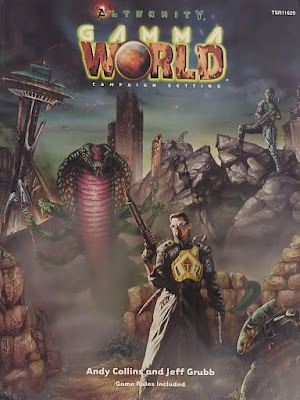


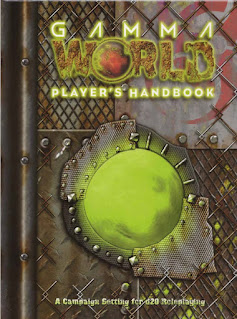
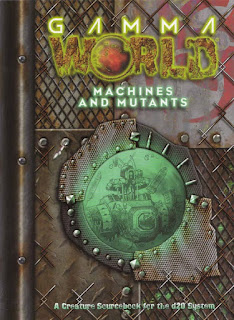
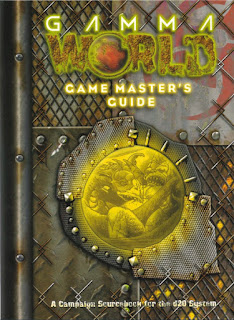
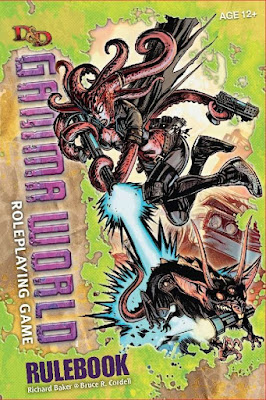

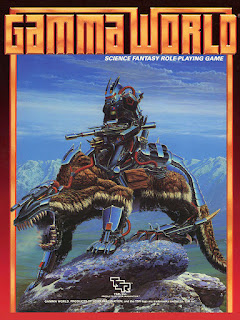
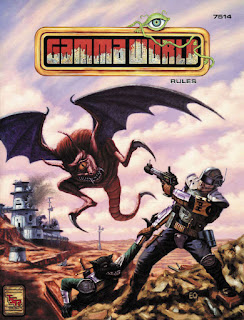


.jpg)










